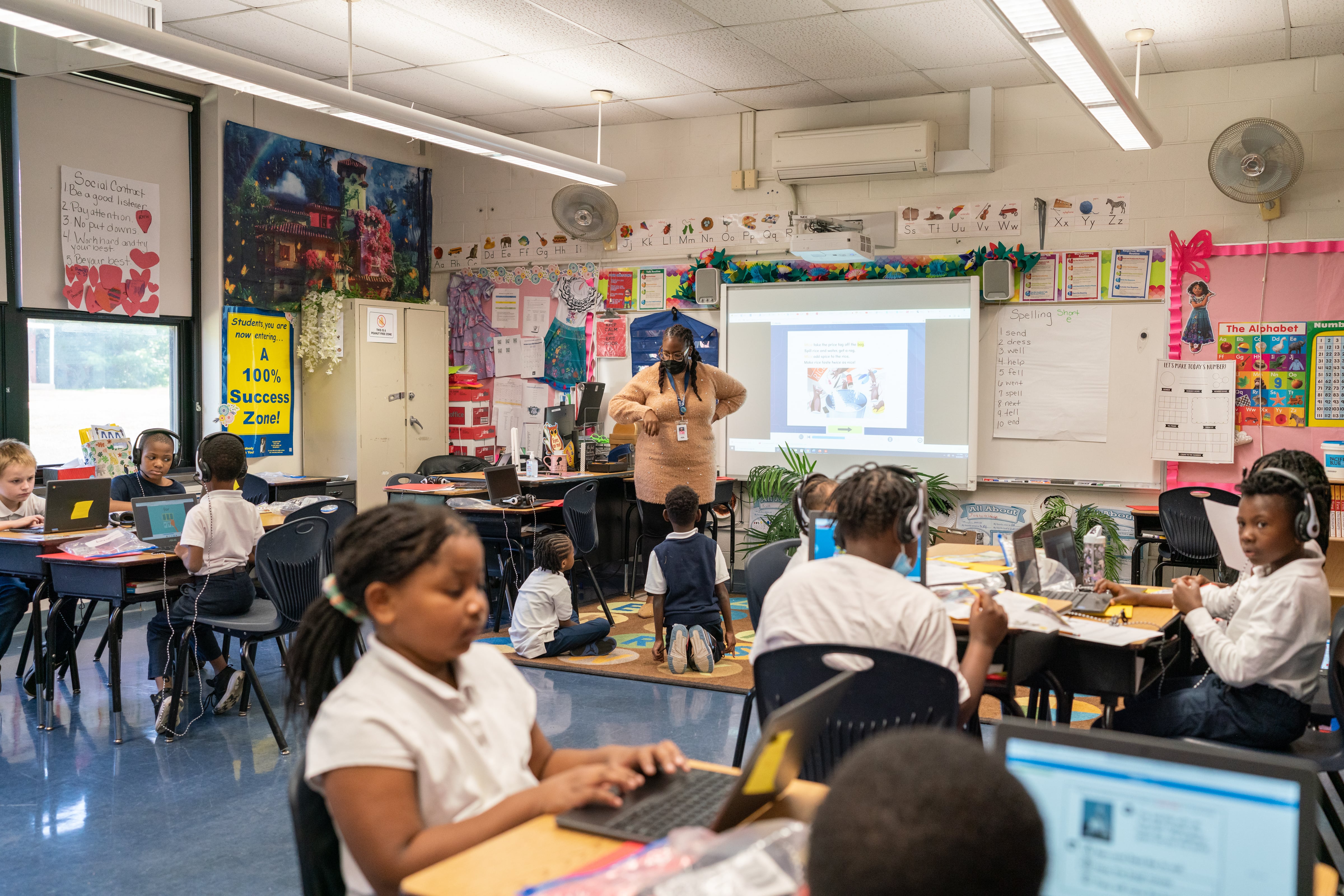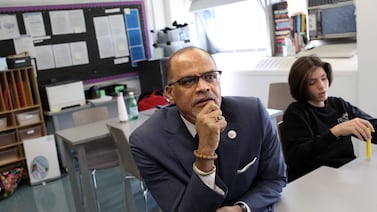Child care providers in Cook County were able to stay open during the early part of the COVID-19 pandemic due to federal funding, but a new report finds that the region still lacks licensed home-care providers, spots for infants, hours in the evening, and affordable options.
For working families, having a safe affordable place to send their children during the work day is essential, but child care in Cook County continues to be expensive — on average $11,500 per year for a preschool child at a child care center and almost 16,500 a year for an infant, according to the report by Illinois Action for Children — a nonprofit organization that helps refer parents to child care providers in Cook County.
To address some of the barriers, the report recommends expanding eligibility for the state’s Child Care Assistance Program to make child care less expensive for families, increasing reimbursements for child care providers to help cover the costs of running their business, and using state funds to increase the number of licensed home-based care providers.
Gov. J.B. Pritzker has said he wants to make Illinois “the number one” state for child care access. The state invested $250 million in early childhood education for Pritzker’s Smart Start Illinois program with the hope of making child care affordable for families.
Illinois Action for Children’s 2023 report examined the state of child care in Cook County, which includes Chicago and surrounding suburbs, from July 1, 2021 to June 30, 2022 using their database of providers. Despite a mix of child care providers and settings, such as a center or care in someone’s home, there is a shortage of child care providers.
Here are four things you should know about the state of child care in Cook County from the report:
Child care centers stayed open with help from COVID-19 funding
The coronavirus pandemic “had the potential to devastate” an already fragile child care system, the report said. While some Cook County providers did close — 2% of child care centers and 12% of home-based care providers — the $980 million in federal COVID-19 relief funds distributed by the state’s department of human services helped to stabilize the industry.
Marcia Stoll, assistant director of research at Illinois Action for Children, said that the Illinois Action for Children data reveals just part of what Cook County’s child care providers went through during the pandemic. Stoll said she learned from providers that a workforce shortage in the industry has created challenges for providers and limited access to care for families.
“We’ve heard anecdotally that some have closed classrooms because they don’t have enough staff or operate shorter hours,” said Stoll. “So, it has made finding care harder for families. It’s not all a rosy picture.”
Home care providers declined during pandemic years
Cook County saw a 12% decrease in home-based providers, or 343 homes, from 2019 to 2022. The report noted that while the drop is “concerning,” the year-to-year decrease is similar to the trend prior to the pandemic. Over the past decade, there has been a 31% decline in the number of home-based providers.
Juliet Bromer, a research scientist at the Erikson Institute — a Chicago-based higher education institution that focuses on early childhood education — said home-based providers disappear because they are expensive to run, providers often work long hours, and the state’s current child care system is hard for an individual to navigate in order to receive funding that a child care center might have. A mix of these issues create burnout causing some providers to leave.
“In every study I’ve done, I heard a version of this quote, ‘I am the cook, the bookkeeper, the psychologist, the teacher, the parent,’” said Bromer.
Illinois Action for Children recommends that the state provide funding to help providers get a state license, offer startup grants, and reimburse home-based providers at a higher rate.
Early morning, evening, or weekend child care is often unavailable
Parents who don’t work a 9 a.m. to 5 p.m. job often can’t find child care early in the morning, in the evening, on the weekend or overnight, the report found. An analysis of census data for Cook County found that 34% of parents with low incomes need early morning child care from 4 a.m. to 8 a.m and 16% need child care in the evening from 6 p.m. to 12 a.m., according to the report. For parents looking for child care at these times, the report found that licensed home-based child care providers are more likely to offer services.
The report says the state could create policies that would allow families to mix the type of child care they need to ensure that they have care throughout the day. For instance, the state could allow parents to use home-based care during the evenings and center care during the daytime.
Child care is still expensive for families
The federal Department of Health and Human Services says child care should only cost 7% of a family’s income according to the report. For many families who don’t meet the threshold for the state’s child care assistance program and have infants or two or more children, child care consumes a large portion of household income. In 2022, the monthly income limit to qualify for assistance for a family of four was $5,203.
According to the report, the average price for center care for a 2-year-old accounted for 15% of family income in 2021, two times higher than what’s recommended. Illinois Action for Children recommends increasing eligibility for the state’s child care assistance program to support more families.
The report also recommends that the state increase reimbursement rates for providers so they pay staff a higher salary and continue to give families high-quality care.
Correction: Sept. 11, 2023: This story has been updated to reflect that Marcia Stoll is the assistant director of research for Illinois Action for Children, not the director of research.
Samantha Smylie is the state education reporter for Chalkbeat Chicago, covering school districts across the state, legislation, special education, and the state board of education. Contact Samantha at ssmylie@chalkbeat.org.








